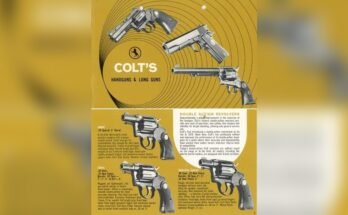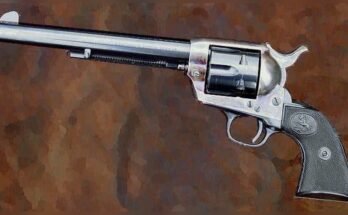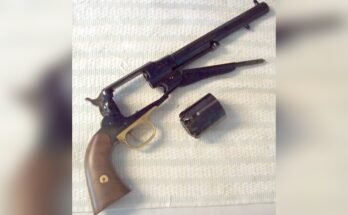Are you curious about the safety of single-action revolvers? Whether you’re new to firearms or have some experience, understanding how safe these guns are is crucial for your confidence and peace of mind.
You might have heard different opinions, but what’s the real truth behind their safety? This article will guide you through everything you need to know, helping you make informed decisions every time you pick up a single-action revolver. Keep reading to discover key facts that could protect you and those around you.
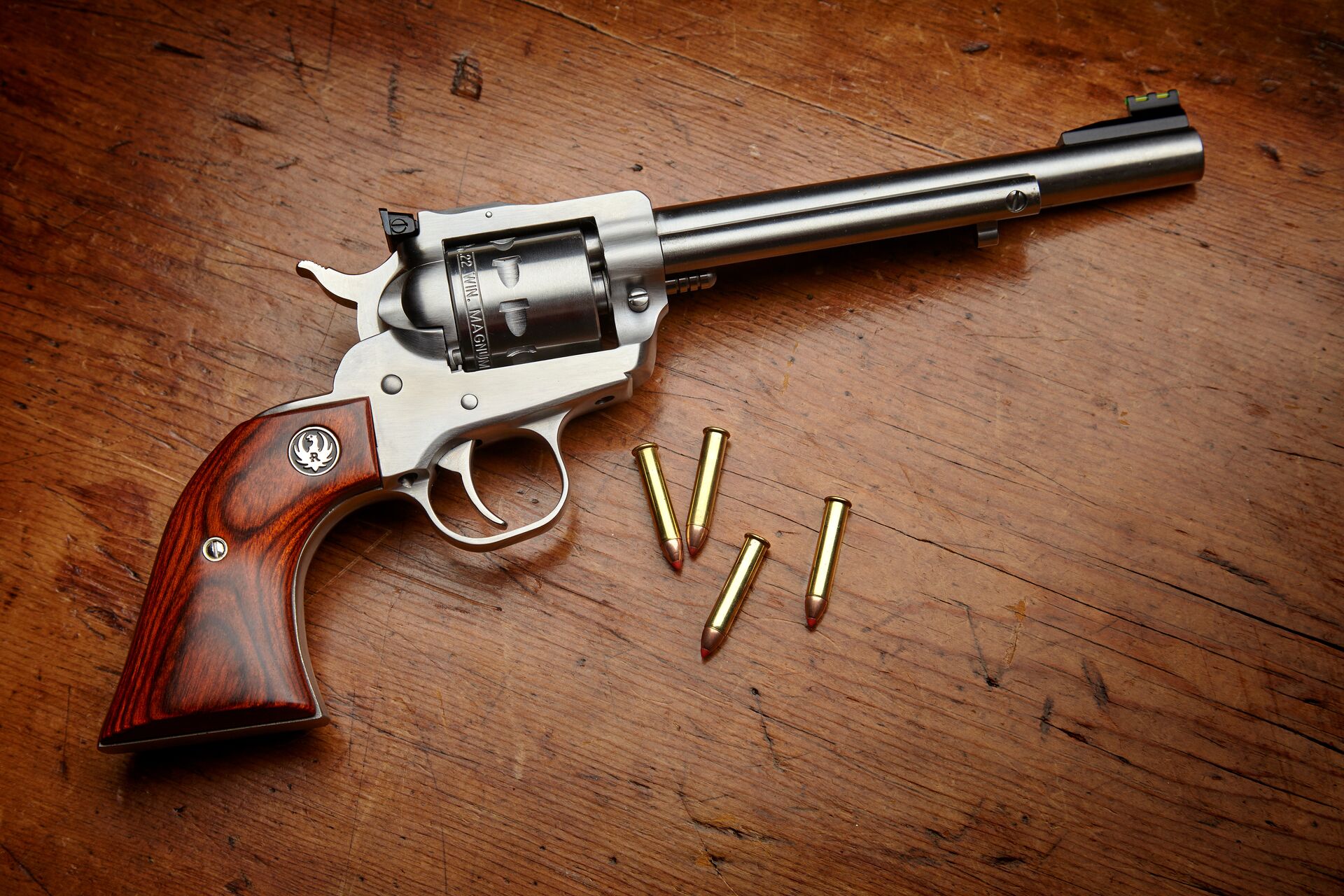
Basics Of Single-action Revolvers
Single-action revolvers have a long history and a unique way of working. They differ from other guns by the way you prepare and fire them. Understanding the basics helps you use them safely and confidently.
These guns are simple but require attention to detail. Knowing how they work and which models are common makes it easier to handle them correctly.
How They Work
Single-action revolvers need you to pull back the hammer before each shot. This action moves the cylinder, aligning a new bullet with the barrel. Pulling the trigger then releases the hammer to fire the bullet.
This method means you must cock the gun each time you want to shoot. It adds a step but also helps prevent accidental firing. The design is straightforward, with fewer parts than some modern guns.
Common Models
Several single-action revolvers have become famous over time. The Colt Single Action Army is one of the most well-known. It has been used by many since the late 1800s.
Other popular models include the Ruger Vaquero and the Uberti Cattleman. These guns are often used for sport shooting and collecting. Each model offers reliable performance and classic design.
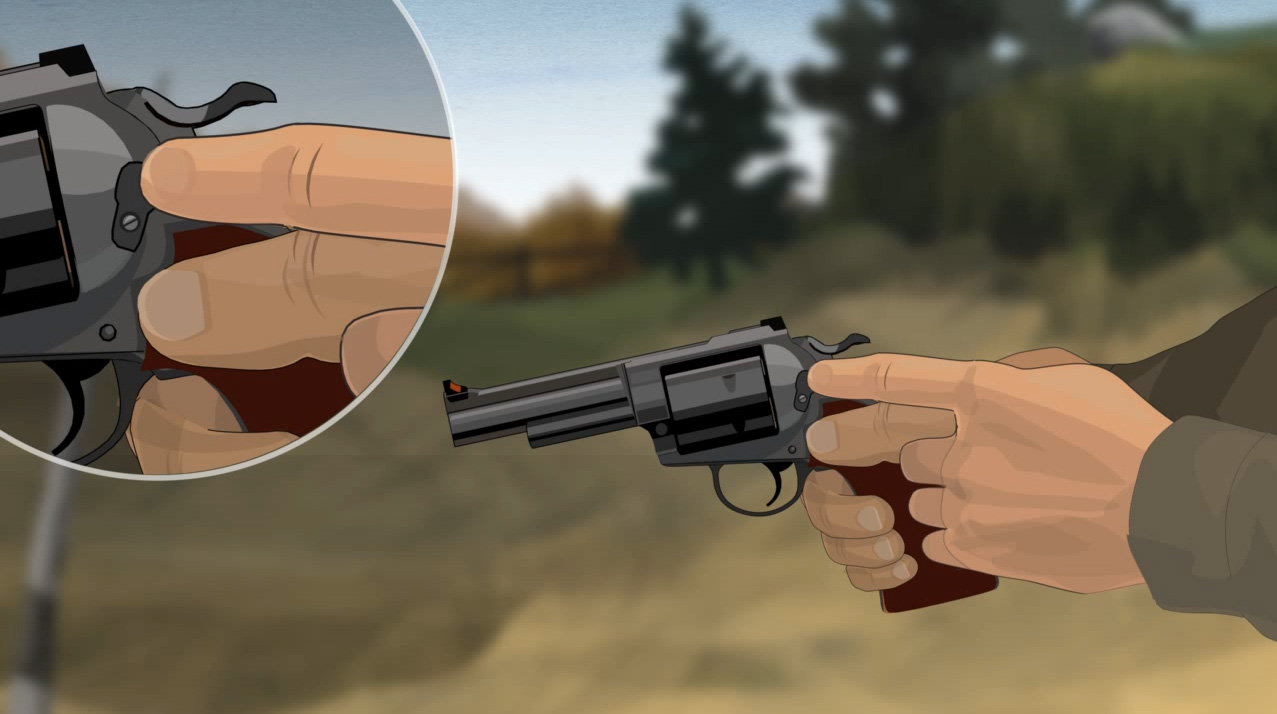
Safety Features To Know
Single-action revolvers have a reputation for simplicity. Knowing their safety features helps users handle them carefully. These features reduce the risk of accidental firing. Understanding the key parts is vital for safe use.
Hammer And Trigger Mechanics
The hammer must be manually cocked before firing. This action makes the gun ready to shoot. The trigger only releases the hammer once cocked. This design adds a safety step before each shot. Some models have a half-cock position. It prevents the hammer from striking accidentally. The trigger pull is firm and deliberate, reducing accidental pulls.
Loading And Unloading Controls
Loading requires opening a loading gate on the side. Each chamber is loaded one by one. This method helps avoid loading mistakes. Unloading is done by pushing the ejector rod. It clears spent cartridges safely. The design prevents the cylinder from rotating when closed. This stops accidental misfires during loading or unloading. Always check the chambers visually before use.
Potential Risks And Hazards
Single-action revolvers have a classic design but come with risks. Knowing these dangers helps users stay safe. Understanding potential hazards is key for safe handling and use.
Misfires And Accidental Discharges
Misfires can happen if the gun is not properly maintained. Dirt or rust can block the firing pin. This causes the gun to fail when fired.
Accidental discharges occur when the trigger is pulled by mistake. Single-action revolvers need the hammer to be cocked first. Still, careless handling can lead to accidents. Always keep your finger off the trigger until ready to shoot.
Handling Old Or Vintage Models
Old revolvers may have worn parts that affect safety. Springs and screws can weaken over time. This can cause the gun to misfire or jam.
Vintage models might use outdated ammunition that is unsafe today. Using the wrong ammo can cause damage or injury. Always check with a gunsmith before using old revolvers.
Safe Handling Practices
Safe handling practices are key to using single-action revolvers safely. These guns need careful attention and respect. Following basic safety rules reduces risks and makes shooting safer for everyone. Understanding how to hold and control the revolver is the first step. Good habits protect you and those around you.
Learning proper grip and stance helps control recoil and aim better. Keeping your finger off the trigger until ready to shoot prevents accidents. These simple steps build safe habits that last.
Proper Grip And Stance
Hold the revolver firmly with your dominant hand. Wrap your fingers around the grip, keeping your thumb on the side. Support the gun with your other hand for extra stability. Stand with feet shoulder-width apart to balance your body. Lean slightly forward to absorb recoil. A steady stance improves accuracy and control.
Trigger Discipline
Keep your finger outside the trigger guard until you are ready to shoot. Rest your finger along the side of the revolver. This practice avoids accidental firing. Only place your finger on the trigger when your sights are on the target. Good trigger discipline builds safe shooting habits and prevents accidents.
Maintenance For Safety
Maintaining a single-action revolver is key to using it safely. Regular care helps the gun work properly and reduces risks. Dirt, rust, or worn parts can cause problems. Safe use depends on good maintenance habits.
Regular Cleaning Tips
Clean your revolver after every use. Use a soft brush to remove powder and dirt. Wipe the barrel and chambers with a cleaning patch. Apply a small amount of gun oil to prevent rust. Avoid soaking the gun; oil lightly only.
Inspecting For Wear And Damage
Check the revolver’s parts before each use. Look for cracks, rust, or loose screws. Test the trigger and hammer for smooth movement. Replace worn or damaged parts immediately. Use a qualified gunsmith if unsure about repairs.
Training And Skill Development
Training and skill development play a key role in safely using single-action revolvers. These firearms require specific handling skills and practice. Without proper training, users may find them tricky or unsafe. Building confidence and competence helps prevent accidents. Learning the right techniques improves accuracy and control. Consistent practice is essential for safe operation.
Professional Instruction
Seeking professional instruction is the best way to learn safe revolver use. Experts teach proper grip, loading, and firing steps. They show how to handle misfires and malfunctions safely. Trainers correct mistakes early, avoiding bad habits. Lessons focus on safety rules and situational awareness. Professionals also guide users on maintenance and storage. This structured learning builds a strong safety foundation.
Dry Fire Practice
Dry fire practice means pulling the trigger without live rounds. It helps improve trigger control and aiming without recoil. Users can repeat actions safely and build muscle memory. This practice is useful for timing the hammer cocking and trigger pull. Dry firing should be done with an unloaded revolver only. It is a low-cost, risk-free way to develop skills. Regular dry fire sessions increase confidence and safety.
Storage And Transport Guidelines
Safe storage and transport of single-action revolvers reduce risks. Proper care protects you and others around. Follow simple rules to keep firearms secure and controlled.
Secure Storage Options
Store revolvers in locked containers or safes. Use gun locks for extra safety. Keep firearms out of reach of children and unauthorized persons. Choose cool, dry places to prevent damage. Avoid leaving revolvers unattended or loaded in open areas.
Transporting Safely
Carry revolvers unloaded during transport. Use hard cases designed for firearms. Lock cases to prevent easy access. Keep ammunition separate from the gun. Know local laws about carrying firearms in vehicles. Always stay calm and careful when handling revolvers on the move.

Frequently Asked Questions
Are Single-action Revolvers Safer Than Double-action Ones?
Single-action revolvers are generally simpler to operate. Their safety depends on proper handling and maintenance. They have fewer moving parts, which can reduce malfunction risks but require manual cocking for each shot.
What Safety Features Do Single-action Revolvers Have?
Most single-action revolvers have a hammer block or transfer bar safety. These prevent accidental discharge if dropped. Always check your model’s safety features and follow safe handling practices.
How Should I Safely Load A Single-action Revolver?
Load single-action revolvers with the hammer down on an empty chamber. This reduces the risk of accidental discharge. Always keep the muzzle pointed in a safe direction during loading.
Can Improper Use Make Single-action Revolvers Unsafe?
Yes, improper handling, such as dry firing or neglecting maintenance, can cause safety issues. Always follow manufacturer instructions and practice responsible firearm use to ensure safety.
Conclusion
Single-action revolvers can be safe when used carefully and correctly. Always follow basic gun safety rules. Keep the gun pointed away from people. Use proper handling and storage methods. Regular cleaning and maintenance matter a lot. Practice shooting at a safe place.
Know your revolver well before use. Safety depends mostly on the user’s actions. With respect and care, single-action revolvers pose little risk. Stay alert and responsible every time you handle one. Safety is always your top priority.
